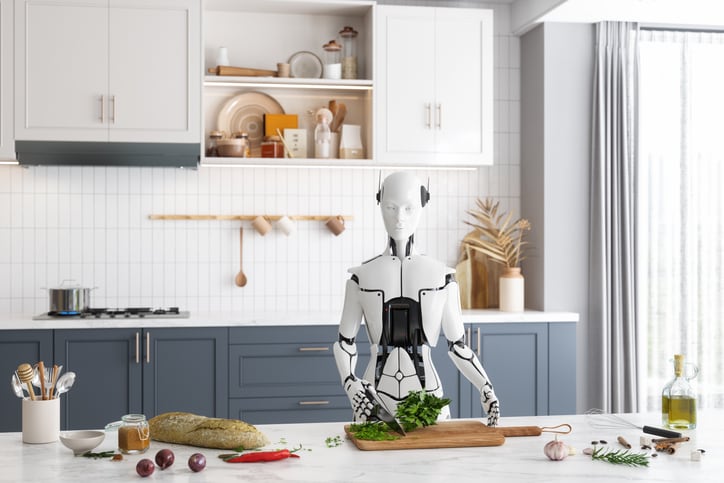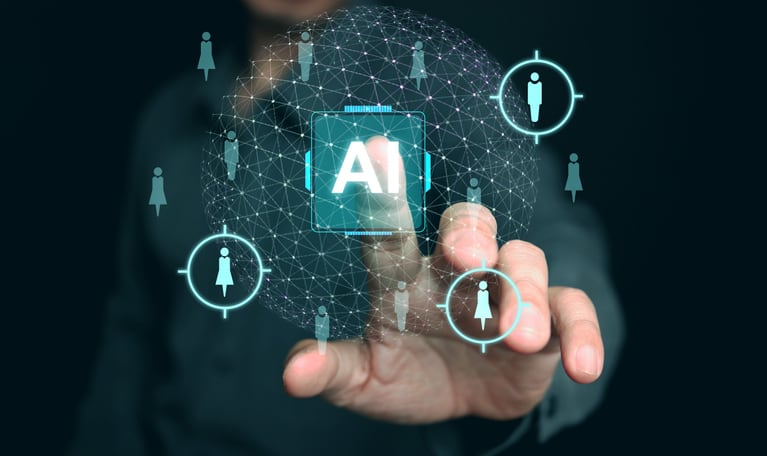While the technology is still evolving, experts agree that companies willing to experiment, adapt and upskill today will be best positioned to shorten product development cycles and bring innovations to market faster, according to three experts, including a PepsiCo R&D leader, gathered by the Institute of Food Technologists.
From rules to generative intelligence
The line between artificial intelligence (AI) and machine learning (ML) is often blurred, but the two terms are not interchangeable, they explained this week at a seminar hosted by IFT focused on leveraging AI for faster product development cycles.
Rather, AI and ML coexist and work together, with ML serving as the foundation for many AI systems, explained Michael Slater, technical director of consulting at the software development and consulting firm Improving.
Slater emphasized how the field has evolved from traditional ML–models built for narrow tasks like classification or forecasting–to modern generative AI. Tools such as ChatGPT or Copilot represent a different paradigm of deep learning architectures that mimic brain-like networks and can synthesize knowledge across domains.
This shift opens new opportunities for product developers. Instead of relying solely on domain experts, teams can now tap into insights from massive datasets in seconds. As Slater explained, generative AI “unlocks the ability to search terabytes of information in seconds and return a structured summary” – a capability that can accelerate ideation and feasibility analysis.
Still, Slater cautioned that today’s large language models (LLMs) come with limitations. They are not trained on peer-reviewed scientific literature and are built to always produce an answer, even when accuracy is uncertain. To address this, he advocates for agentic workflows – AI-driven processes in which autonomous agents make decisions, take actions and coordinate tasks with minimal human intervention – while drawing on trusted, domain-specific sources such as scientific journals. This is possible when users provide models with access to such materials, enabling them to interpret the content and respond with the rigor of a scientist.
In his view, AI should act as a “wingman” augmenting creativity, automating routine tasks and supporting research while scientists retain ultimate decision-making authority.
AI as a toolbox
Jay Gilbert, director of scientific programs & product development at IFT positioned AI as a toolbox, warning that “AI is not coming for your job, but someone with AI is.”
Success, he argued, depends not on whether organizations adopt AI, but on how wisely they choose the right tool for the right task.
For Gilbert, experimentation with off-the-shelf platforms like ChatGPT is essential for learning. But long-term value lies in developing or adopting domain-specific systems that reflect organizational priorities, safeguard intellectual property and reduce risks around data privacy.
“Always read the fine print,” he advised, stressing that proprietary questions, formulas or IP should not be absorbed into public training datasets.
Gilbert also emphasized the importance of trust and transparency. Just as brands must earn consumer trust, businesses must evaluate who is building the AI models they rely on and on which data those models are trained.
One practical framework Gilbert described is retrieval-augmented generation (RAG). He likened it to an Amazon warehouse – meaning organizational knowledge is packaged and stored, and when the AI is asked a question, it “fetches” the relevant information and delivers a referenced, validated response.
This system allows AI to support ideation and problem-solving while ensuring that humans, especially scientists remain in the loop.
Scaling AI in enterprises
From the perspective of large companies, Mohamed Badaoui Najjar, R&D senior director of digital transformation & global specifications at PepsiCo highlighted both the advantages and the complications of AI adoption. Big organizations already have deep internal expertise, but surfacing, organizing and mapping that knowledge remains a major challenge, he said.
Najjar stressed that AI integration depends on mindset, adoption and upskilling. Off-the-shelf tools are useful for exploration, but tailored systems and structured digital proficiency training are necessary to achieve long-term value.
“Start today in your upskilling journey,” he urged, noting that scientists must be equipped with tools designed by and for their field.
For Najjar, the ultimate goal is “first-time right” development which means shortening product lifecycles by reducing iterations and ensuring solutions align with customer value. By removing unnecessary complexity, organizations can move faster while staying profitable. He underscored the importance of clear functionality design, aligned to company size and lifecycle stage, as well as smooth handoffs from R&D to commercialization.
The road ahead
Despite their different vantage points, Slater, Gilbert and Najjar agree that AI will not replace scientists, but scientists who embrace AI will outperform those who don’t. Today’s systems may be imperfect, sometimes producing “hallucinations” or errors but they represent the weakest the technology will ever be.
For food and product developers, the path forward lies in thoughtful adoption:
- Experiment with off-the-shelf tools
- Build domain-specific workflows grounded in trusted data
- Protect intellectual property and ensure transparency
- Invest in upskilling to prepare teams for the next wave of digital innovation
Done right, AI won’t just make product development faster – it will make it smarter, more reliable and more aligned with customer needs.




